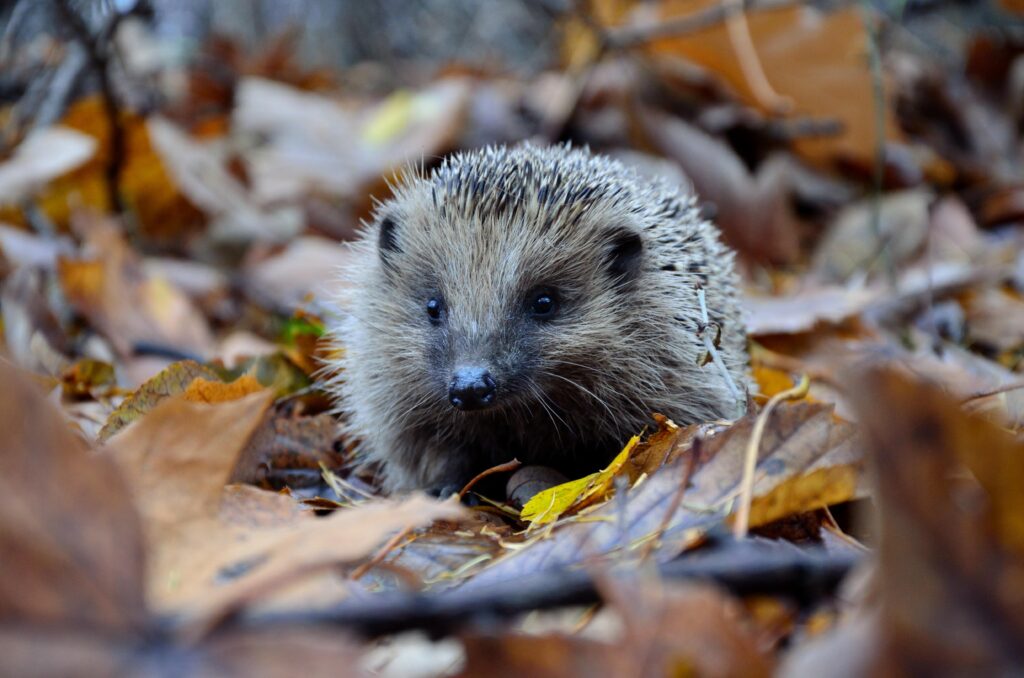‘Record number of back-garden bonfires’: How to protect hedgehogs from DIY bonfires at home

It’s set to be a record year for back garden bonfire celebrations on 5th November, with households determined to keep the Guy Fawkes bonfire night festivities alive.
Though with the spike in DIY bonfires in gardens across the UK, wildlife experts have warned the public to check their bonfires for wildlife before lighting.
Hedgehogs are in particular danger as bonfire log piles appear to hedgehogs to be ideal places for shelter. Unfortunately the native British mammals regularly fall foul of un-checked bonfires and are killed because of it.
The lovable creatures were recently named on The Mammal Societies Red List of endangered mammals which makes the warning for bonfire night more crucial than ever. Since 2007, numbers of wild hedgehogs in the UK have halved, and there are now thought to be fewer than a million left in the UK.
Sean McMenemy, garden wildlife expert and director of Ark Wildlife, says “Hedgehogs are a welcome sight in any garden, as they help keep control of pests like snails, slugs and other insects. But in the UK these beautiful and valuable creatures are disappearing at an alarming rate. With their natural habitats being destroyed by urbanisation, our gardens are a crucial place of safety for hedgehogs, so it’s important that people do everything they can to protect them.
Bonfires appear to hedgehogs to be ideal places for shelter. Made from natural materials like wood and compost and full of small nooks and crannies to crawl into, it’s unsurprising that hedgehogs can easily mistake them for habitats. With more back garden bonfires taking place this November there’s an even greater threat to hedgehogs than usual, so we all need to be vigilant. It’s certainly possible to have a wildlife friendly bonfire night if the right precautions are taken!”
How to have a wildlife-friendly bonfire this year
There are a few simple steps you can take to ensure your back garden bonfire is as safe as possible for hedgehogs and other creatures. Sean McMenemy provides his top tips for having a wildlife friendly bonfire night.
- Don’t build it until the same day that you will light it. The longer it’s left for, the more likely that a hedgehog will find its way into your bonfire.
- If you need to build your bonfire in advance, make sure you place chicken wire one metre high all the way around the bottom. This should be placed at an outward angle to make it more difficult for hedgehogs to climb.
- If you have stored materials for your bonfire outdoors before building it, move them to a different patch of ground before you start.
- Always place the bonfire on open ground – never on a pile of leaves as a hedgehog may be hiding underneath.
- Always check the entire bonfire for hedgehogs before lighting it. Remember that they tend to hide in the centre and bottom two feet in particular.
- When checking, lift parts of the bonfire section by section using a pole or broom. Do not use a fork, spade or rake as this may injure a hedgehog.
- Use a torch to look inside the bonfire and listen for a hissing sound, as this is the noise that hedgehogs make when they are disturbed or distressed.
- Always light your bonfire from one corner, rather than in the centre, in order to give hedgehogs a chance to escape if they need to.
What if you find a hedgehog in your bonfire
If you do find a hedgehog, it’s important to move slowly and calmly in order not to alarm it. Even if the bonfire is lit, if you have followed the steps above you should be able to rescue the hedgehog.
With a pair of gardening gloves, pick it up (along with any nest material it may have been sitting in) and place it in a high-sided cardboard box. Ensure this contains plenty of newspaper, and relocate the box to a safe and suitable location that is far from any fires. Wait until the bonfire is over and and dampen down the fire site with water before releasing the hedgehog under a bush or a log pile to ensure its safety.




